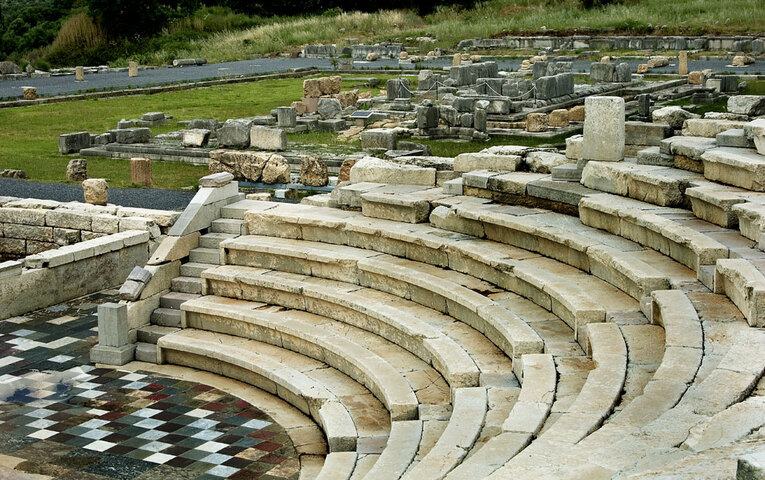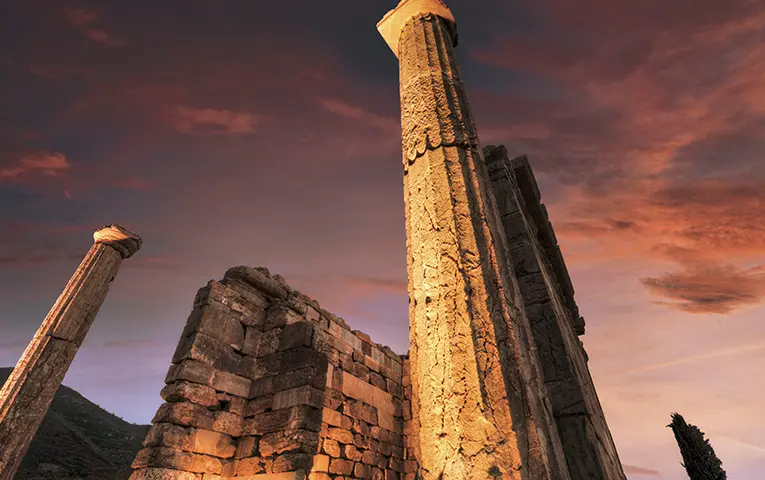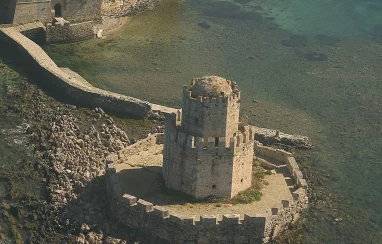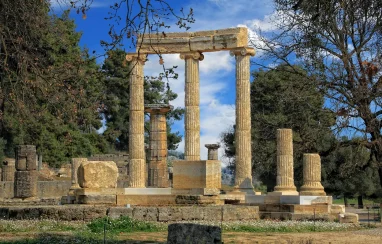By John Leonard
Edited by Duncan Howitt-Marshall
Located just over an hour away from Costa Navarino, in the rugged landscape of the southwestern Peloponnese, ancient Messene is a sight to behold. Spread over an open hillside in the shadow of Mount Ithome, its beautifully restored ruins allow visitors to explore the layout of an entire ancient city. In its heyday, Messene was said to be larger than Athens, its majestic center covering an expanse of 2.9 square kilometers and encircled by a formidable array of watchtowers and 9m-high fortification walls. Founded in 369 BC, following the downfall of Sparta’s regional hegemony, every aspect of the city was designed to reflect the inhabitants’ beliefs about democracy and the equal distribution of wealth; a beacon of hard-won independence from Spartan militarism.
Abandoned in the 3rd century AD, the city soon fell into ruin, picked apart by local inhabitants in search of building materials. For 1,700 years, the once flourishing city lay dormant; a mass of scattered ruins amid sprawling olive groves, vineyards, and grazing land. In the late 19th century, Greek architect and future prime minister, Themistocles Sophoulis, endeavored to excavate the site, unearthing the remains of large-scale civic buildings. But it was only in 1986, when archaeologist Petros Themelis (1936-2023) and his associates embarked on their own excavation program, that the once glorious city began to rise like a phoenix from the ashes. The site has since been transformed into one of Greece’s most outstanding archaeological parks, awarded the prestigious Europa Nostra Award in 2011.

A monument to Messinian independence
Messene was one of ancient Greece’s greatest Classical, Hellenistic, and Roman cities. Unmistakably a mainland settlement, with its sweeping colonnades of predominantly Doric style, Messene’s richly preserved cityscape and dramatic setting overlooked by Mount Ithome nevertheless call to mind similarly striking eastern Greek urban centers such as Priene. The robustness of Messene’s fortification walls, however, a circuit reaching some 9km in length, points to the distinctly Peloponnesian needs of this community, which lived also in the shadow of a fearsome, once-powerful neighbor: Sparta.
The people of Messene had every reason to take precautions when they founded their city in 369 BC. Only two years earlier, the Theban leader Epaminondas and his Boeotian forces had defeated the Spartans at the Battle of Leuctra. Messene and its contemporary neighbor Megalopolis were to serve as fortified strongholds that would deter Sparta from regaining its former regional hegemony. The Messenians had long endured as Sparta’s helots, until – after rebellions, banishments, and all-out wars – they succeeded in establishing their own city, where they could at last enjoy freedom and allow their culture to flourish.
As Messene prospered through the 3rd and 2nd centuries BC, it came to be an elegant monument to Messenian independence, a vibrant center of far-reaching fame that attracted both prominent and humble travelers during Hellenistic-Roman times. Messene’s ruins also drew medieval and early modern tourists, many of whom published engravings of the city’s overgrown, picturesque landscape.

What you will see
The archaeological excavations and reconstruction of Messene, directed by the late Petros Themelis, represent one of the most ambitious, impressive such programs in Greece. Themelis’ finds, with those of previous investigations that stretch back as far as the Greek Archaeological Society’s original 1895 expedition, have revealed an array of public and private structures, including the city’s theater, a vast, colonnaded marketplace (agora), numerous temples and small shrines, a monumental fountain, an athletic complex adorned with more than 150 columns and an extraordinary cone-roofed family tomb.
During their approach to the site, generations of visitors have first encountered Messene’s imposing city walls, towers and circular Arcadian Gate, with its huge fallen lintel. Today, the small archaeological museum is also not to be missed, with its splendid examples of statues that once adorned Messene’s buildings and streets. Further downhill, the theater (3rd century BC) is notable for its multi-phased scene building (skene). The earliest skene was apparently wooden and movable, as stone-cut tracks for wheels are visible at its eastern end.
On the left-hand side of the agora are the low remains of the “Treasury House,” where, in 183 BC, Philopoemen, the captured general of the Achaean Confederacy, is believed to have been confined and later poisoned by the Messenian general Dinocrates.
The Asclepieion complex, at the heart of ancient Messene, consisted of a large Doric temple dedicated to Asclepius, surrounded by four Corinthian colonnades (stoas). Here one finds shrines dedicated to Artemis, Tyche, Epaminondas, Heracles, Apollo and the Muses. Opposite are the Ekklesiasterion (a small theater and political meeting hall), the Bouleuterion (council house) and the State Archives. According to Themelis, the Asclepieion’s foundation in 214 BC, during a period of civil strife and nationalistic fervor, marked the end of oligarchic rule and the establishment of democracy. It also commemorated the city’s Theban foundation.
Especially striking are the re-erected columns of the Gymnasium/Stadium area and a finely restored mausoleum, resembling a small, prostyle Doric temple, which served as a funerary monument for the prominent Saithidae family (1st century BC). Nearby, an earlier family tomb, Funerary Monument K3 – a square enclosure, covered with a conical roof supporting a Corinthian column capped with a bronze sculpture – is unique in Greece.

